Cologne is best known for its towering cathedral, but only its choir (the cathedral’s back end) is from the Middle Ages. The soaring entrance was built in modern times. Before then, Great St. Martin was the most prominent building in Cologne’s skyline.
Its regal 4 cornered Romanesque tower distinguished Cologne as much as any modern city’s tallest skyscraper. But I found the inside even more moving.
The current church was begun in the late 12th century, after a fire destroyed the area in 1150. The land was originally an island in the Rhine, just outside the ancient Roman city. As Cologne grew in the 10th century, the water between both lands was filled in. A monastery had been on the island, so the area was already considered sacred. It was about to be crowned as magnificently as any piece of land has been.
The above photo shows what you see as soon as you enter. It didn’t seem special to me at first–just a good example of stately Romanesque arches arranged in lines and half circles.
This shot’s also from the nave, looking back towards the entrance. The church was consecrated in 1172, but this nave was built afterwards, and the arches over the entrance look somewhat Gothic. The nave is stately, but the original part of the church is the real treasure, for 2 reasons.
1. Great St. Martin was the first building to copy the clover-leaf-shaped choir of Cologne’s St. Maria im Kapitol. But I liked Great St. Martin’s more. Above, you can see the main side of the choir, opposite the entrance.
Above is what you see when you turn left. And when you turn right–
–you see the 3rd semicircular structure branch out. The magic happened as I walked around and savored the clover-leaf form. It’s a great example of Western aesthetics and spirituality, which often stress simple and permanent forms as the models of ultimate truth.
2. Great St. Martin was built on a narrow piece of land, so the building was made lofty rather than sprawling. As I strolled through the choir, my gaze naturally went upwards. The church isn’t a huge building that makes a resounding statement about the king’s power, like Speyer Cathedral. It’s small and intimate, and it makes the permanent forms and heavenly aspirations as gentle as the music in Gabriel Faure’s Requiem. And–
–many parts of the church still hold paint from the Middle Ages.
Much of the church was painted in lively colors and designs. This is Cologne–its worldly merchants could only stand so much spirituality.
Everything came together for me in Great St. Martin–stately and simple geometric forms, lofty spiritual flights, intimacy, gentleness, and worldly cheer. I don’t think there’s one view at the church that will wow you. But savor it slowly, and you’ll discover one of the West’s most beautiful expressions of an integrated world and heaven.

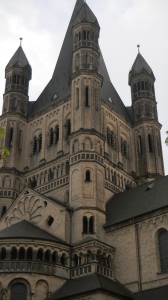
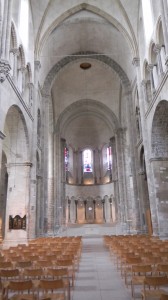
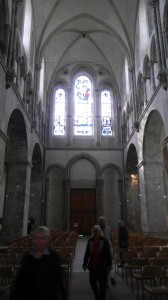
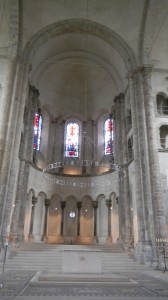
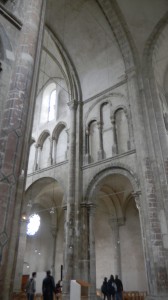
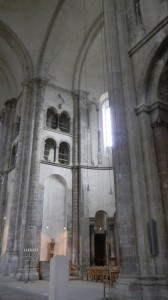
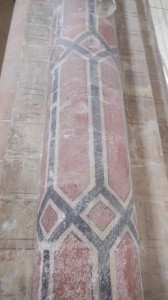
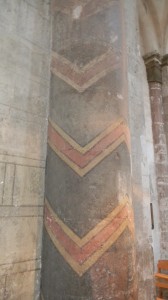
Comments on this entry are closed.